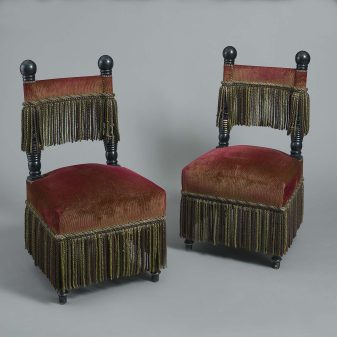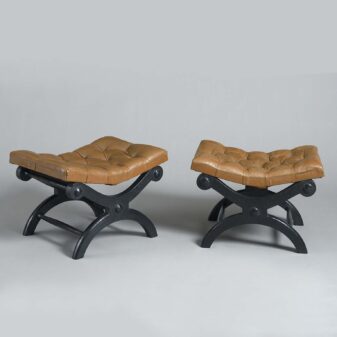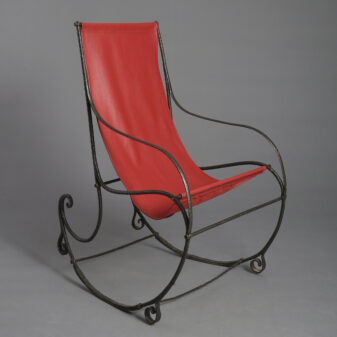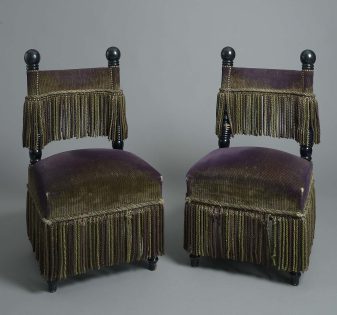A Gothic Windsor Yew Wood Armchair
£3,500
SOLD
A finely shaped Windsor armchair in the Gothic manner, the pointed arched yew wood back with pierced tracery fretwork decoration having armrests, all set upon a solid shaped elm seat and raised upon two cabriole front legs and two turned rear legs with spindle stretchers.
The ‘Windsor’ chair is a back stool of wedged construction, that is to say that its legs, back, arm rests and spindles are all wedged into a slab seat. This form of construction dates back to the Middle Ages and in its earliest forms was rudimentary with no turning or pierced decoration beyond the functional. By the eighteenth century, this simple and provincial form became refined as professional craftsmen embellished the model with elaborately turned spindles and pierced back splats.
The earliest know examples appear to originate in the Thames Valley around Berkshire and Surrey and most probably take their name from the most important town in that region – Windsor. The Thames was a major transport route into London and it seems plausible that the geographical position of Windsor made it a likely home to manufacturing without the City of London. It is also worth noting that the earliest references to the Windsor chair relate to places in the Home Counties west of London: in 1724, Lord Percival describes a visit to Hall Barn in Buckingham where his wife ‘was carry’d in a Windsor chair like those at Versailles’. Evidently, these chairs were largely made for outdoor use and as with garden seat furniture at Versailles, they were often mounted on wheeled platforms for tours of the grounds of important country houses. Another reference to this is a drawing of circa 1733 which depicts two such chairs being drawn around the gardens of the Rotunda at Stowe.
The Windsor chair typically consists of a slab seat with vertical spindles, supporting a horizontal crest rail in earlier examples, or as in models from the last quarter of the eighteenth century, a bow-form back.
This example, made at the end of the nineteenth century, directly draws its inspiration from the late eighteenth century Windsor armchair and specifically relates to the rarest kind – the Gothic Windsor chair. The back splat looks directly to the Gothic revival as championed by Thomas Chippendale and his contemporaries in the last quarter of the eighteenth century. As in period models, this fine example also uses yew wood for its upper sections – an expensive timber and a wood with rich colour and dense figuring.














